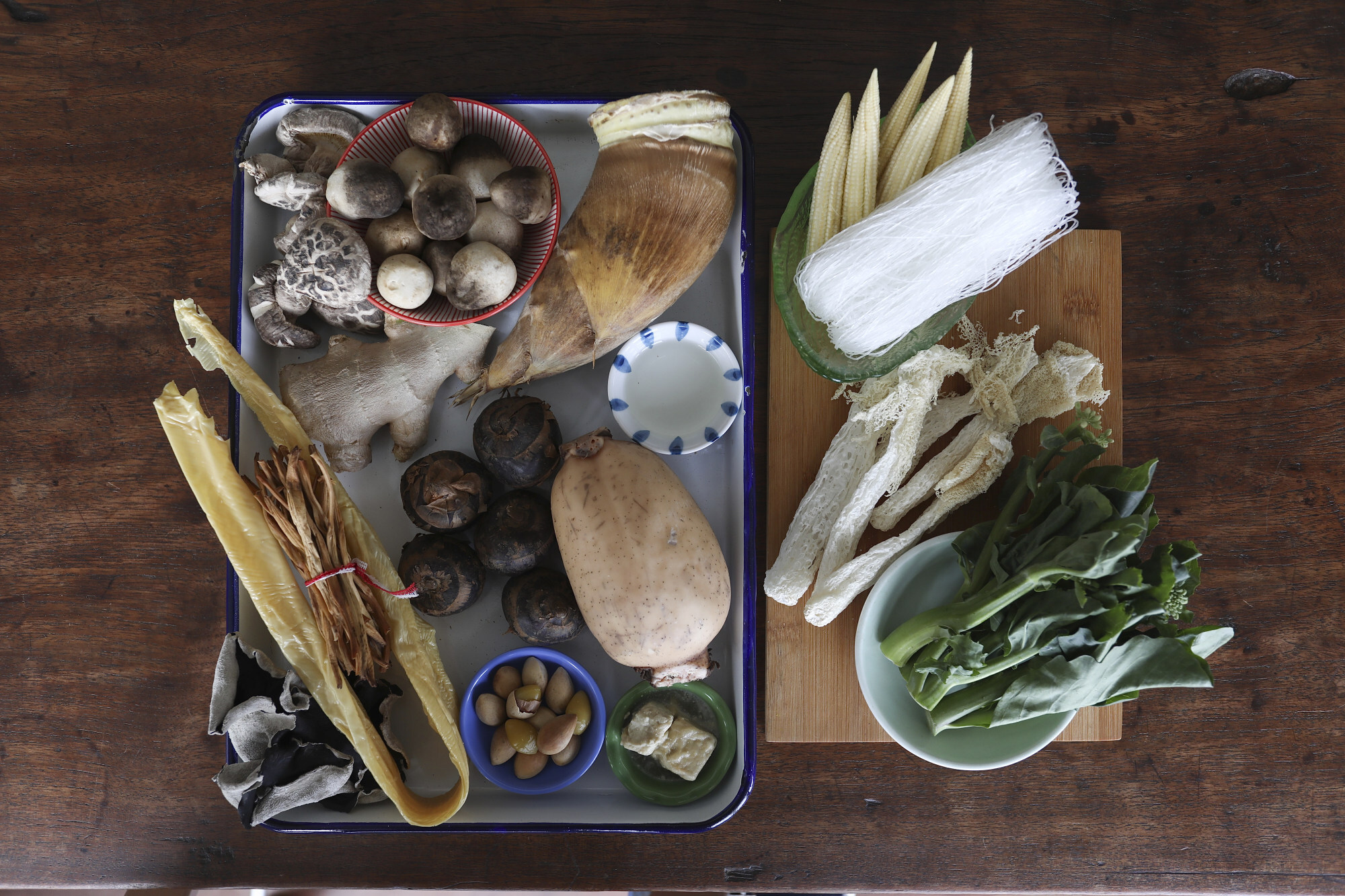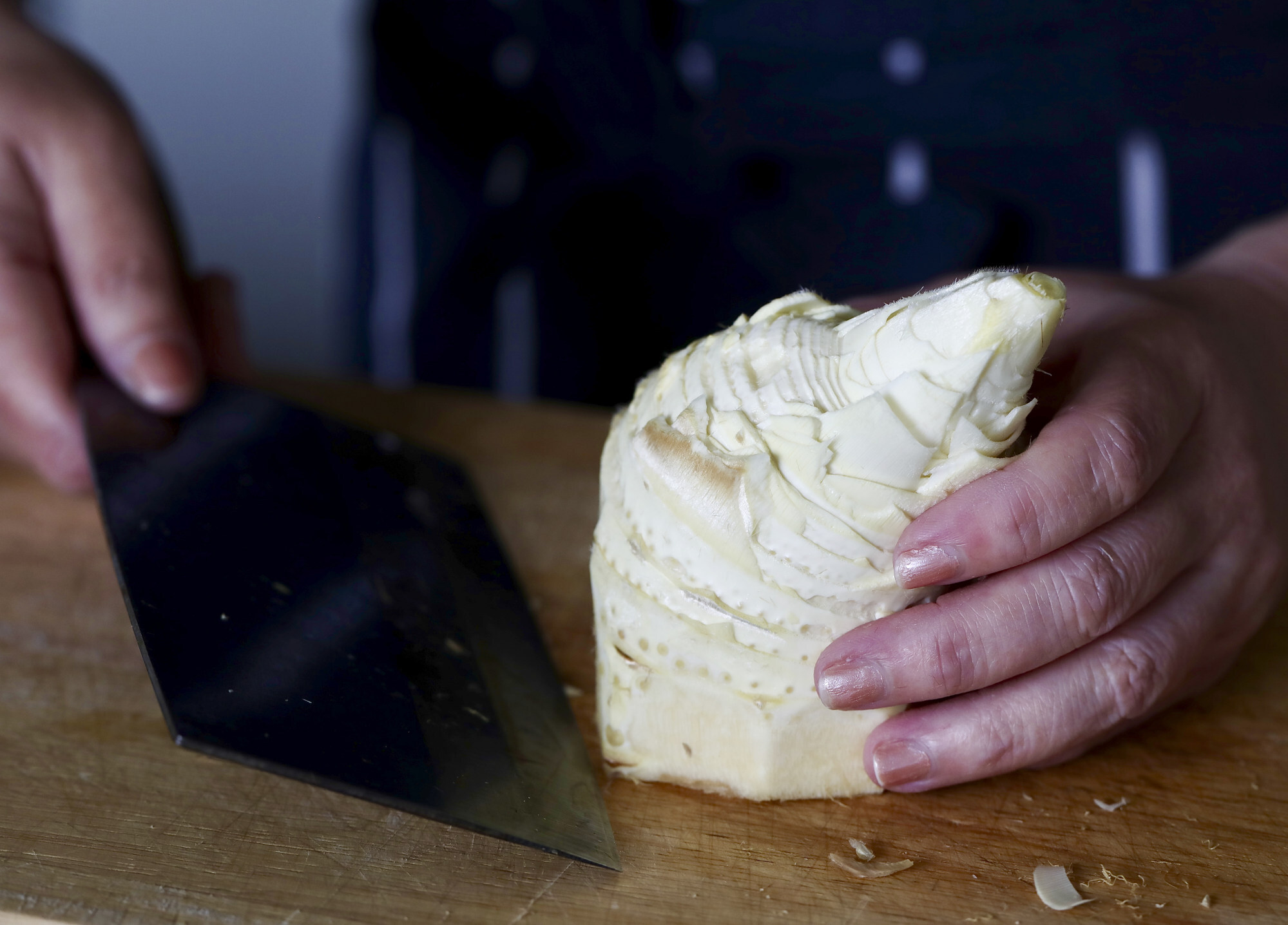
How to make Buddha’s delight, or fat choi jai – a Lunar New Year dish to bring prosperity
- This mixture of fresh and dried vegetables, roots and fungi is an auspicious Lunar New Year dish
- Buddha’s delight typically uses an algae that has a high environmental impact so isn’t used in this dish. Dried oysters have been omitted to keep it vegetarian
One of the dishes I remember my grandmother making for the Lunar New Year is Buddha’s delight, or fat choi jai. The dish gets its Chinese name from fat choi – a blue-green algae often called hairy moss seaweed (although it doesn’t come from the sea), and also for a traditional New Year greeting of kung hei fat choi – a wish for prosperity.
The problem with fat choi is that its overharvesting is causing desertification where it’s grown in Inner Mongolia and other parts of China. It is actually banned in mainland China but you can still find it in shops in Hong Kong – although much of it is fake.
I don’t use it in this dish, so technically, it should just be called jai – but I’m calling it fat choi jai because I still wish you prosperity, as well as the more important health and happiness, in the Year of the Tiger.
Buddha’s delight (Fat choi jai)

This vegetarian dish is traditionally eaten on certain days of the Lunar New Year celebrations.
My grandmother (and many other cooks) made it with dried oysters (another auspicious ingredient for the New Year), but oysters are not vegetarian.
Not just plants: the rise of flexitarian eating and the chefs endorsing it
Feel free to change the recipe according to whatever dried and fresh ingredients are available. Depending on where you live, you may not be able to find bamboo pith, lily buds (also known as gum jum or golden needles), dried bean curd sheets, or cloud ear or wood ear fungus, for instance, so use more of what you can find, and/or add more dried Chinese (shiitake) mushrooms.
The dried mushrooms need at least three hours to completely hydrate; if it is more convenient, start soaking them the night before you make the dish.
You can – if you must – use canned water chestnuts, bamboo shoots or straw mushrooms, but they don’t have much flavour. Before using them, drain off the liquid in the can, then rinse the ingredients under cool running water before draining again.
This makes a lot, but the leftovers are delicious. Because the ingredients really absorb the liquid, add more water or vegetarian broth before reheating in a pot.

Ingredients
-
45 grams (1 ½ oz) dried Chinese mushrooms
-
15 grams (½ oz) dried cloud ear or wood ear fungus
-
10 grams (1/3 oz) dried lily buds
-
6 bamboo piths
-
60 grams (2 oz) dried bean curd sheets
-
50 grams (1 ¾ oz) mung bean vermicelli
-
About 400 grams (14 oz) fresh, unpeeled bamboo shoot, or 200 grams (7 oz) peeled bamboo shoot
How to make vegetarian mapo tofu: mushrooms so good you won’t miss the meat
-
10-12 ginkgo nuts
-
1 short section fresh lotus root, about 250 grams (9 oz)
-
6-8 fresh water chestnuts
-
60 grams (2 oz) fermented bean curd (naam yu)
-
5 grams (1 tsp) granulated sugar
-
40ml (2 tbsp plus 2 tsp) rice wine
Souperb! Asia’s soups no flash in the pan as 6 make world’s best 20 list
-
30ml (2 tbsp) soy sauce
-
10ml (2 tsp) cooking oil
-
2 thin slices peeled ginger
-
6-8 pieces fresh baby corn
-
6-8 Chinese kale stalks

1 Briefly rinse the Chinese mushrooms, cloud ear or wood ear fungus and lily buds under cool water. Put them in a large bowl and add a litre of cool water, then set aside to soak for at least three hours, or until fully hydrated.

2 About one hour before starting to cook the dish, put the bamboo pith, dried bean curd sheets and mung bean vermicelli in a large wide bowl and add cool water. Leave to soak until fully hydrated, pressing down on the bean curd sheets as they soften.

3 If using unpeeled bamboo shoot, trim off and discard the base of the shoot and the leaves, leaving only the tender flesh.
4 Lay the bamboo shoot flat on the cutting board and, starting at the tip, slice it about 5mm (¼ in) thick. Stack the slices and cut them into pieces about 1cm (⅜ in) wide.

5 Bring a pot of water to the boil, add the bamboo pieces and simmer for five minutes, then drain in a colander.
6 Bring a fresh pot of water to the boil, add the ginkgo nuts and simmer for about three minutes. Remove the ginkgo several at a time from the water, and peel off the shell and thin papery skin when they are just cool enough to handle.
7 Peel the lotus root, then rinse it thoroughly. Slice it about 5mm (¼ in) thick, then stack the slices and cut them in half.

8 Rinse the mud (if any) from the water chestnuts, then peel them and rinse again. Slice about 5mm (¼ in) thick.
9 Put the fermented bean curd in a bowl and mash it with a fork. Mix in the sugar, rice wine and soy sauce.

10 Squeeze the water out of the Chinese mushrooms, cloud ear or wood ear fungus and lily buds, but reserve the soaking liquid. Trim off and discard the stems from the mushrooms, then cut the caps into halves or quarters, depending on size. Slice the cloud ear or wood ear fungus into pieces about 5mm (¼ in) wide. Find the tough bud on one side of each lily bud, then trim it off and discard it. Tie each lily bud into a knot. Pour the soaking liquid into a pot and heat it until simmering.
11 Heat the oil in a large clay pot (or use a regular pot) placed over a medium flame. Add the ginger and stir for about 30 seconds. Stir in the fermented bean curd mixture, then pour in about 750ml (3 cups) of the hot soaking liquid.
12 Add the Chinese mushrooms, cloud ear or wood ear fungus, bamboo shoots, lotus root and water chestnuts. Bring to a boil, then turn the heat to low, cover with the lid and simmer for about 15 minutes.
How to make butadon – Japanese rice bowls with pork and onion
13 Cut the bamboo piths into 1.25cm (½ in) pieces and add them to the pot. Tear the bean curd sheets into large-ish pieces and mix them into the ingredients. Add the lily buds and ginkgo nuts and simmer for about 10 minutes.
14 The mixture should be soupy; if it seems dry, add more soaking liquid. Taste for seasonings and correct, if necessary.
15 Slice the baby corn in half lengthwise and add them and the kale stalks to the bowl. Simmer for about five minutes.

16 Squeeze the water out of the mung bean vermicelli, then add it to the pot. Simmer for about two minutes, then serve.
Food styling: Nellie Ming Lee. Kitchen: courtesy of Junk Kitchen

